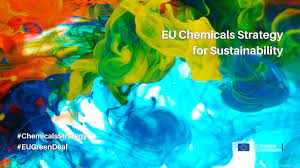Economic Analysis of the Impacts of the Chemicals Strategy for Sustainability – Phase 1

The EU Chemicals Strategy for Sustainability (CSS) was launched in October 2020, to provide a new longterm strategy for chemicals policy, in line with the aims of the EU Green Deal. The Strategy strives for a toxic-free environment, where chemicals are produced and used in a way that maximises their contribution to society including achieving the green and digital transition, while avoiding harm to the planet and to current and future generations.
It envisages the EU industry as a globally competitive player in the production and use of safe and sustainable chemicals. The Strategy proposes a roadmap and timeline for the transformation of industry with the aim of attracting investment into safe and sustainable products and production methods.
Cefic commissioned the independent economic research consultancy Ricardo Energy & Environment to make an assessment of the business impacts to the EU chemicals industry as a result of selected actions from the Chemical Strategy for Sustainability to provide industry’s input to the European Commission’s own impact assessments on the changes to Classification, Labelling and Packaging (CLP) and REACH.
The scope of this study is related to business impacts such as compliance and operating costs, as well as manufacturing and use restrictions, incurred by chemicals companies which place chemical products on the market (manufacture, import, formulation and sale) in the EU-27 as well as the potential impacts on the value chains of all manufacturing industries. These consultation exercises engaged more than 100 business respondents that represent a significant proportion of the EU-27 chemicals sector output (67%/2019).
The report of Phase 1 of the analysis, published on 2 December 2021, presents the results of the impact of various variants of changes in the CLP Regulation and the implementation of the GRA, which have the most significant impact on industry, in line with the EU Guidelines for Better Regulation with a focus on:
- The addition of hazards to the CLP Regulation (EC) No. 1272/2008.
- The extension of the Generic Risk Approach (GRA).
The main conclusions of the expected impacts on the turnover of the chemical sector in the EU are the following:
- The changes to CLP Regulation and the extension of a GRA as proposed under the CSS will most likely impact 28% of the total industry portfolio.
- About one third of those 28% might be potentially substituted and/or reformulated, although there is uncertainty. Business expectations are affected not only by what might be technically and economically feasible but also how their customers may react to the substitutes and/or reformulated products.
- Changes to CLP and GRA, when accounting for potential business responses, could lead to a reduction in product portfolio and business (in turnover terms) of around 12% or equivalent to €70 billion of the 2019 market.
The next report is expected to be published in Q2 2022.
Find out more.